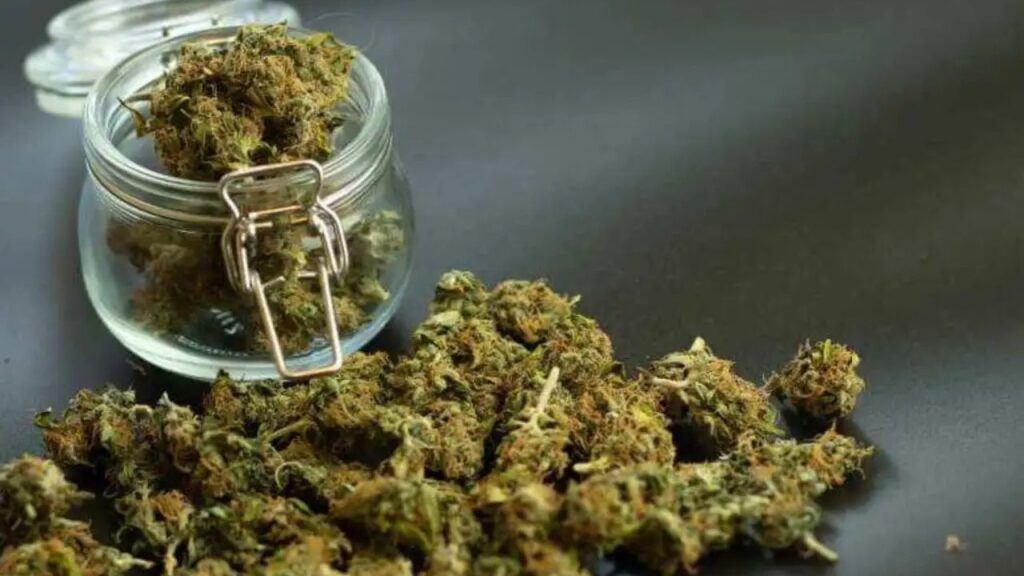Indica cannabis strains earn praise for their calm, body‑focused high. Yet many new consumers still ask, “What are the effects of indica strains, and how do they differ from sativa?” This guide answers those questions in clear, short sentences. You will learn how indica works, what to expect during an indica high, and how to pick the best product for your goals. Read on to discover science‑backed insights that Google loves and readers trust.
What Are Indica Strains?
Botanists first defined Cannabis indica in the late 18th century. Plants grow short and bushy, with broad, dark leaves. They evolved in cooler, harsher climates—think Afghanistan or northern India. This origin pushed indica to create dense buds rich in cannabinoids and terpenes that protect against cold and pests. Today, breeders cross indica with other varieties to refine flavor, potency, and medical benefits.
Cannabinoids and Terpenes: The Engines of Indica
Indica strains usually carry higher levels of the calming terpene myrcene and balanced ratios of THC and CBD. Myrcene can enhance couch‑lock and muscle relaxation. THC drives euphoria, while CBD eases inflammation. The exact profile changes from cultivar to cultivar, so always check the lab report before you buy.
Primary Effects of Indica Strains
What are the effects of indica strains? Most users report:
-
Deep physical relaxation – tight muscles loosen within minutes.
-
Mellow mental state – racing thoughts slow, and calm settles in.
-
Sleep support – many people fall asleep faster and stay asleep longer.
-
Pain reduction – chronic aches may fade as cannabinoids interact with endocannabinoid receptors.
-
Increased appetite – the famous “munchies” can help patients who struggle to eat.
Short, potent effects make indica popular at night or on lazy days. Always start low and go slow to find your sweet spot.
Indica High Effects: How It Feels

An indica high often starts behind the eyes, then spreads through the neck, shoulders, and limbs. Limbs feel heavier. Many users notice tingling. Music sounds richer. Colors may seem warmer. You might melt into the couch and lose track of time. Social anxiety usually declines, making TV, board games, or quiet chats more enjoyable. Because focus can drift, save complex tasks for another time.
What Does Indica Do to the Body and Mind?
What does indica do biochemically? THC binds to CB1 receptors in the brain, releasing dopamine and serotonin. CBD modulates this activity, reducing paranoia risk. Meanwhile, terpenes such as linalool and β‑caryophyllene provide their own calming or anti‑inflammatory effects. Together they:
-
Lower cortisol levels are linked to stress.
-
Dilate blood vessels, promoting circulation.
-
Slow neural firing, which leads to sedation.
-
Trigger ghrelin, the hunger hormone, boosting appetite.
These synergistic actions explain why indica feels both soothing and restorative.
Benefits of the Indica Strain for Specific Needs
The benefits of indica strain varieties extend beyond simple relaxation:
| Need | How Indica Helps |
|---|---|
| Insomnia | Shortens sleep onset time and lengthens deep‑sleep cycles. |
| Chronic Pain | THC dampens pain signals; CBD and myrcene reduce inflammation. |
| Muscle Spasms | Indica relaxes smooth muscle tissue, easing cramps. |
| Stress & Anxiety | Lower cortisol and higher serotonin calm the nervous system. |
| Low Appetite | Stimulates hunger, useful during chemotherapy or eating disorders. |
Indica vs Sativa Effects: Key Differences
Indica vs sativa effects form the classic cannabis debate. In general:
| Feature | Indica | Sativa |
|---|---|---|
| Growth Habit | Short, stocky, quick flowering | Tall, airy, longer flowering |
| Dominant Terpenes | Myrcene, linalool | Terpinolene, limonene |
| Typical THC: CBD | Balanced to high CBD | High THC, low CBD |
| Mindset | Relaxed, introspective | Energized, creative |
| Best Time | Evenings, rest days | Mornings, social events |
Choosing the Right Indica Product
-
Read the Certificate of Analysis. Look for potency, terpene profile, and contaminants.
-
Match effects to your goal. For sleep, pick high myrcene. For pain, look for CBD‑rich indica.
-
Select a delivery method. Flower acts fastest; edibles last longer; tinctures offer precise dosing.
-
Start with low THC. Try 2–5 mg in edibles or a single inhalation from flower or vape.
-
Track your results. Keep notes on dose, time, and feelings to refine future sessions.
Potential Side Effects and Safety Tips

Even soothing indica can cause:
-
Dry mouth and eyes
-
Dizziness when standing
-
Short‑term memory lapses
-
Grogginess the next morning if taken late
-
Rare anxiety or paranoia at high doses
Stay hydrated, snack on fruit, and avoid alcohol. Keep products out of children’s reach. If you feel discomfort, move to a calm space and breathe deeply. Effects usually fade within two to four hours.
Call to Action:
Now that you understand what the effects of indica strains are, it’s time to explore them firsthand. Whether you’re seeking better sleep, pain relief, or a calm evening unwind, indica can help. Start with a trusted strain, check lab results, and go low and slow with your dose. Experience the benefits of true relaxation—discover your ideal indica today.
FAQs
1. What are the effects of indica strains?
Indica strains typically produce calming effects that relax the body and mind. Users often report reduced stress, pain relief, and improved sleep. These strains are ideal for nighttime use and can create a sense of deep tranquility and comfort, making them a popular choice for both recreational and medicinal users seeking relaxation.
2. Effects of indica strains?
The effects of indica strains include full-body relaxation, mental calm, and increased drowsiness. They help ease muscle tension and anxiety, often leaving users feeling peaceful and sleepy. These effects make Indica ideal for stress relief, pain management, and insomnia. Unlike energizing strains, indica promotes rest, making it perfect for unwinding after a long day.
3. Indica high effects?
An indica high brings a soothing, sedative experience. The body may feel heavy, and the mind becomes quiet and introspective. Users often experience couch lock, slowed thoughts, and a mellow vibe. These effects are great for evenings when you want to disconnect, relax, or get ready for bed without intense mental stimulation or activity.
4. What does indica do?
Indica affects the body by relaxing muscles, calming nerves, and promoting sleep. It slows brain activity, eases pain, and triggers hunger. These actions make it helpful for anxiety, insomnia, and chronic pain. Indica strains usually contain higher levels of calming terpenes and cannabinoids that target the nervous system for deep relaxation.
5. Benefits of the indica strain?
Indica strains offer multiple benefits, including reduced anxiety, pain relief, improved sleep, and muscle relaxation. They are commonly used to treat conditions like insomnia, stress, and chronic pain. Indica’s calming nature helps users unwind and feel at ease, making it a preferred choice for nighttime use or moments of high stress.
6. Indica vs sativa effects?
Indica strains promote body relaxation and sleep, while sativa strains boost energy and creativity. Indica is ideal for nighttime use and managing stress or pain, while sativa suits daytime focus and social activity. Choosing between indica and sativa depends on whether you seek sedation and calm or stimulation and mental clarity.
Conclusion:
Understanding what the effects of indica strains are can help you use cannabis more effectively and responsibly. Indica strains offer deep body relaxation, stress relief, better sleep, and pain management. Whether you’re winding down after a long day or seeking natural support for insomnia or chronic pain, indica can provide comfort and calm. Start low, stay mindful, and enjoy the peaceful effects.
Read More>>>>>>> How to Understand the Effects of Indica Strains













